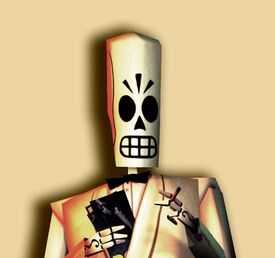I’ve been driving an automatic since I passed nearly a decade ago. In that time whenever I tell anyone I drive auto, it’s usually met with some level of derision. I think that attitude is changing, but I’m still kind of confused by it in the first place.
Why?
American manual/stick driver here.
Manuals are cheaper, more responsive, lower maintenance than wet-automatics. So even here where automatics are common, knowing that my skill gap vs you is literally saving me thousands in maintenance costs is definitely a big portion of my superiority complex.
However, with the dawn of CVT automatics, this is no longer true. CVTs are nearly maintenance free, have instant response, ideal power delivery.
So technology has changed, but not everyone recognizes the new era of advanced automatic transmissions.
But I’ll absolutely still look down on any old-style wet clutch / torque converter based automatic.
Manuals are also an effective anti-theft measure here in the US, as most of us (myself included) don’t know how to drive them properly.
I’ve read multiple stories of thiefs realizing they were stealing a manual transmission, and literally just giving up after driving a few feet. Pretty hilarious.
This answer hits the nail on the head.
Autos used to be really shit, in a country where fuel is expensive, and distances smaller, you’d only get an auto if you physically couldn’t use the clutch.Nowadays, they’re much better.
If I don’t end up fully electric on the next car, it will definitely be CVT.Even the zf8?
I can’t say I’m a car buff unfortunately, so I can’t say I’ve experienced that particular transmission yet.
Reading up on the transmission: it sounds like the torque converter could be replaced with mild-hybrid electric engines to help kickstart the transmission. This is very interesting to me, and I think that’s a great way around the problems of traditional torque-converters.
I’d imagine that Mild-Hybrid ZF8 (torque converter replaced with electric motor) would be a serious contender in feel and response.
There’s too many different cars with the ZF8 and too many different configurations to generalize. It seems like a promising design, but I’m going to bet that mild-hybrid ZF8 is the best feel. There’s just a lot of downsides to the traditional wet-clutch / torque-converter frontend of transmissions IMO.
I don’t personally have experience with a diverse multitude of cars (and transmissions) as a whole either, but i’ve heard plenty of good things online about the zf8 as probably one of the best torque converter automatics on the market for sporty driving (e.g. having very responsive shifts). It supposedly does not feel like a “slush box” which i’m assuming exhibits many of the behaviors that you’re describing for a typical torque converter automatic.
In terms of drivetrain choices for daily driving, fully electric bevs seem to be the best fit. Instant torque, lots of torque, probably lower maintenance(?). And i say this as a lover of manual transmissions (my miata is currently in the shop though 😢)
Define “instant response”
CVTs are always “in gear”, and quickly adapt to whatever torque vs RPM band your engine needs. At no point is your engine every “out of gear”. Their “noise is wrong” to anyone used to older transmissions, but their performance cannot be denied or ignored. I’m very impressed with their tech. Its just a matter of getting used to it IMO.
Manual transmissions can “shift ahead of time”, so with enough brainpower and paying attention, you should usually be in the correct gear for any situation. But any particular gear-shift takes time to accomplish. The exception are 0-60 kind of drag-races (erm, 0-100km/hr for yall Brits), where the manual effort to gearshift is unavoidable, but typical driving with a manual is very pleasant because normal roads are far more predictable and no one is trying to drag-race around every corner on public roads.
Traditional Automatic transmissions all take time, and the clock starts after the user pushes the pedal (unlike manual which starts when the driver notices that another gear would be useful, often ahead of time)… So automatic transmission is always slower.
0-60 kind of drag-races (erm, 0-100km/hr for yall Brits)
Brits still use miles per hour. You might be thinking of the Irish, they use KM/H… although they don’t like being called Brits 🫠.
And yet any time you change throttle input they change gearing and have horrible “lag”. While they may be always engaged they’re never in the right “gear”.
How many dragons have you tamed?
deleted by creator
A lot of the CVTs I was thinking about when I wrote that post were eCVTs like the Prius Prime.
I didn’t realize that eCVT for Prius Prime is very different than… other… CVTs. There’s probably more kinds of CVTs out there than any other transmission.
Prius Prime has two powerful electric motors (!!) for spinning two different parts of the planetary gear system, +1 ICE engine (so 3x total powered inputs) to the power split device. Toyota calls it eCVT, because CVT is emulated by computers controlling the 3x inputs. When one of the electric motors spins in reverse, it increases the effective gear ratio of the other parts of the power-split device, leading to a feeling of instant torque that’s powered by the electric motor.
Honda Accord’s eCVT is completely different, as I’ve discovered through discussion later down with another poster. Honda’s Hybrid is closer to a pure electrical system and… they say eCVT for some insane reason but its just an electric motor really.
So its different than what other car manufacturers called a CVT. I didn’t realize how many kinds of CVTs there were today when I wrote that post.
Automatic cars used to be slower and less fuel efficient than manual. This is of course no longer true, but public perceptions are very slow to change.
Brit here who used to hate driving automatics. I used to drive on my gears a lot. A mix coasting/hyper-miling and gear breaking. Every time I drove an automatic it felt really wrong as it never changed gear as I would. I felt I was less in control.
Now I drives EVs, no gears for it to get wrong. I thought not changing gear would bother me, but it never feels in wrong gear, so I don’t notice. Though this is a hybrid I drive and it’s so odd to hear and feel the complete disconnect with the drive and engine.
This is a debate is thing that is just going to go away with ICE cars.
Quickly becoming a moot point. EVs don’t even have gears to shift. Single speed forward or reverse. Shifting gears will eventually be like dialing a rotary phone.
I’m not sure if that’s the most efficient use of resources. EVs can only be gearless if they have over a half-ton of batteries providing huge amounts of power to their electric motors.
PHEVs, such as Prius Prime, Volvo or other cars (US Market, sorry I don’t know UK market too well), do have an EV-only mode. But the smaller batteries force them to use CVT or other automatic transmissions so that their torque/horsepower bands can be better matched.
I’m not convinced that having all of our cars filled with half-ton to 1-ton batteries is the best design.
I’m going to knock your socks off… The vast majority of “normal” EVs don’t have gears as such. There are one or two supercar EVs that have a high and low gear but that’s it. Many hybrids don’t have gears either. My Accord Hybrid has an “eCVT” which is just marketing bullshit for covering up the fact that it’s functionally an EV with a gasoline powered generator. Honda has programmed the ECU to do fake shifts to make boomers feel more comfortable with the new technology. It’s only imitating an automatic transmission with software trickery. The gas engine isn’t even mechanically connected to the wheels for like 95% of the driving I do. IIRC that tech was borrowed or heavily influenced by the Prius.
I’m well aware of the larger torquebands across wider RPMs of electric motors vs ICE motors, especially the high torque available at 0 RPM. But that doesn’t change physics or chemistry.
Porsche Taycan isn’t a supercar, and it has this high/low gear / Two-speed transmission for its EV, because at higher RPMs even an EV will run out of torque, and it becomes a good idea to convert RPM vs Torque through the use of a gearbox. Gearboxes / Transmissions have been used for a hundred years. They are among the most sophisticated parts of a modern car, and are made with cheap steel and highly automated manufacturing today.
Every motor will have a limit to their useful torquebands. EVs have the widest torque vs RPM in existence ever, but even the biggest motors and biggest EVs have problems.
This is complicated by the fact that Hybrids are far smaller electric-motors with far less battery power than the pure EVs like a Porsche Tycan. As such, the incredibly popular Toyota Prius Prime opts instead for a proper CVT transmission. And I’m willing to bet that Prius Prime 2024 is getting a better driving experience in practice.
Furthemore: there’s something to be said about sophistication of dumber / simpler metals. Steel is found everywhere. Trading cheap steel for Lithium, Copper, and Cobalt sounds like a bad idea to me in general. I guess that copper/lithium is lighter than Steel so saving on weight is helpful, but there’s some crazy bad environmental problems associated with these rarer and more complex metals.
What in the. Why would you make an “eCVT”, and give it fixed gears. CVTs don’t have fixed gears.
https://www.youtube.com/watch?v=jofycaXByTc
I’ve decided to do some research on eCVT. I was surprised at its actual implementation. Toyota Prius, Ford Escape, and probably Honda Accord does this.
Its basically planetary gear magic. A computer can control two or three inputs, while the outputs are hooked up to the wheels of the car. By changing the speed of the variable input (likely the electronic engine)… the effective gear ratio of the “constant” input (likely the ICE engine) is modified. In the most extreme case, the variable input runs backwards to have the “overdrive” gear ratio.
It seems like the Honda Accord is a planetary gear eCVT system. Planetary gears are always so cool, I didn’t realize that a CVT could be implemented with one (albeit with a hybrid vehicle where you have 2 or more powered inputs).
EDIT: it appears that you are correct. Honda’s Hybrid system is different than what I’m familiar with (which is what the above video demonstrated).
https://youtu.be/QLUIExAnNcE?si=7JzkfL8GfUUoFnbK
So you’re right with regards to Honda Accord Hybrid. Very interesting. Its always surprising to me how different car companies are with their implementations.
I’m so glad you found that video! I’ve seen it before and was having trouble finding it again to post a link here. Since you’ve already fallen down this rabbit hole, might I suggest you watch some reviews of the new 11th gen Accord. Honda is not only adding fake shift points to an eCVT that does NOT HAVE FIXED GEAR RATIOS but they are matching those fake shifts with fake engine noises piped through the speakers inside the cabin. They’ve also regressed from the elegant push button gear selector in my 10th gen to a completely unnecessary shift knob protruding from the console in the 11th gen. It’s actually embarrassing how much they’ve had to dumb the car down for people who are either stuck in the past or people who are weekend race car drivers. Mercifully, most of this garbage fakery is only really noticeable if you really flog it or put the car in “Sport” mode.
I just like changing gears
Am*ricans like them.
Therefore we are duty bound to hate them.
The correct answer, we can close this down now.
For the same reason that cars with engine sizes above 2-litres are rare, and always have been rare - petrol is more expensive. Automatics used more fuel, so they were only standard on high-end jaguars, mercedes, etc. Simple as that.
A bad auto can be pretty terrible, but a good (or even half decent) auto is better than a manual in almost every way.
These days modern automatics allow you to select any gear in a manual fashion. Aside from the lack of clutch to control at very low speeds (on ice the wheels might just spin instead of gaining traction) it basically makes manuals obsolete.
I don’t understand this either. I guess they used to be really bad and the attitude has stuck around?
It’s historic. If you’d ever driven a Mk1 Ford Escort with 1289cc and a 3 speed slush-box automatic you’d understand.
Of course modern automatics are completely different but the preference for manual transmission is a hangover from those times.
There’s also a cost factor, traditionally automatics cost more to build, weighed more and performed slightly worse. Now, automatics are probably cheaper to build, perform better, but still cost more.
Manual will always be cheaper. Even CVTs cost more.
A Manual clutch is just a drum-brake (like object) controlled by a a reversed 3rd pedal (brake-like system engages when the pedal is released. While pushing the pedal releases the clutch, its “backwards”) that allows the engine to engage with the transmission system. The gearbox has no computers, just one hydraulic line (only those associated with the 3rd pedal), and unlike a disc-brake its barely used so the drum-like system (which is even cheaper than disc brakes and lasts for 100,000+ miles easily).
The important thing is this “how do you deal with disconnecting the engine from the tires” problem. When 3rd gear is 5000 RPM for your speed, 4th gear might be 4000 RPM (depending on your gearbox of course). A Manual clutch just has the user push on the drum-brake like clutch (releasing the engine, allowing it to spin freely), then you slowly release the clutch, which causes this “brake” to slowly connect the engine with the tires (tires speed up while engine slows down).
Manual drivers get very good at this, and add engine speed / accelerate on downshifts (ex: going from 4000 RPM to 5000 RPM as you go from 4th gear to 3rd gear), you can just apply the accelerator thereby adding engine speed to assist the clutch in matching RPMs for a smooth transition.
Alternatively, manual drivers can heel-toe: apply the accelerator, brake, and clutch simultaneously. Not only is the accelerator helping push the RPM from 4000 RPM and upwards with engine… the brakes are slowing down the car bringing the “target RPM” down to 4500 RPM. So the manual driver can assist in both directions thanks to the use of all three pedals. This technique is called heel-toe because your left-leg controls the clutch, while your right-toe hits the brakes, while the right-heel hits the accelerator, and your heel/toe does different things to help match the RPMs to the Tires.
Modern automatics are:
-
Traditional Wet Clutch – A Wet Clutch uses a highly viscous liquid (aka: the torque converter) that is “always slipping”, no matter the conditions of the car. This means that your car is now always smooth, but the “slush” can take a while before the fluid spins-up to the speeds that matches the engine-with-the-wheels. This is the longest running technology, and someone pointed out that modern wet-clutches like ZF8 are considered quite good. So yeah, “always be disconnected” and use liquid viscosity to help match RPMs as needed.
-
CVTs – unpopular due to the weird noises, but Subaru WRX has shown that its a superior system with relatively cheap manufacturing. A computer controls two hydraulic systems push upon the chain, changing the effective-gear-ratio smoothly. Early models were unreliable and broke, and some bad CVTs still exist out there. But after a few years, all CVTs are long-life and reliable. Subaru has also changed it so that modern CVTs make noises closer to traditional engines, as it turns out that the human ear of an advanced driver is constantly evaluating the engine, so our ear-training is important part of the driving experience.
-
Dual Clutch – A computerized manual transmission. Computers still can’t do all of the manual application that I described above. But… if you add two clutches, and switch between even-gears and odd gears. (ex: Clutch#1 controls gear 1-3-5-7, and Clutch#2 controls 2-4-6-8), then you can switch to the 2nd clutch, and then perform a computerized switch while disconnected. This cheats at the “slippage” problem, but cheating means cheaper assembly and better performance.
In all three cases, modern automatics are heavier, require more parts, more assembly. Reliability is getting better however, and as computers minimize engine slippage the transmissions are having less stress applied to them in general.
Manual drivers get very good at this, and add engine speed / accelerate on downshifts (ex: going from 4000 RPM to 5000 RPM as you go from 4th gear to 3rd gear), you can just apply the accelerator thereby adding engine speed to assist the clutch in matching RPMs for a smooth transition.
I’ve seen manual Fords with a little trick where it holds the revs at the speed for the next gear up, just for a second or so, to make it easier to get a perfect gear change. However, even then an automatic is far better for maintaining acceleration, and therefore more accelerating more efficiently.
In all three cases, modern automatics are heavier, require more parts, more assembly. Reliability is getting better however, and as computers minimize engine slippage the transmissions are having less stress applied to them in general.
Yes that’s the thing, cars already have ECU’s in them as a standard feature now (along with fly-by-wire in general), so the gearbox control is essentially an additional software function rather than any significant part cost. Electronic control is much less likely to burn out a clutch.
But yeah, the additional weight is what has always made autos perform worse. However in terms of cost, I do feel like automatics might come down and beat manuals eventually, particularly as traditional manual gearboxes become more rare and automatics scale up. In any case, the price a car sells for is almost completely detached from the actual cost - the price is set as high as they can get away with, not as a percentage of parts and labour. In this way, an automatic can easily be more profitable than a traditional manual.
I’ve seen manual Fords with a little trick where it holds the revs at the speed for the next gear up, just for a second or so, to make it easier to get a perfect gear change. However, even then an automatic is far better for maintaining acceleration, and therefore more accelerating more efficiently.
0-60 drag races are not a common use case in daily driving. You gear shift to 2nd before making a 15mph turn. You downshift to 3rd when entering a 25mph zone. You shift to 5th (or whatever your last gear is) as you enter the highway.
Otherwise, you’re rarely touching the clutch or gearbox. Sure, a 0-60 hits all gears and requires 5 shifts to be done smoothly, but that’s rare.
Because I’m a human, and I can see the road… I can see that the ~15mph turn is coming up. So I can be already in 2nd gear before the turn comes up. This is useful for engine braking anyway. Then I’m in the correct gear for the turn, and out of the turn. Hitting the proper gear long-before the automatic (DCT, Wet-clutch, or CVT) would ever know about the turn.
This is not an aggressive turn for racing. Racing would likely require heel-toe, a difficult maneuver as I’ve described above. But for daily driving, just predicting “where the car will be” in 10 seconds and getting the gear shifts done ahead of time is really what you’re doing. If you’ll be in 2nd gear soon, might as well get that over with and shift slightly before its needed (5 seconds or so ahead).
Sure, a 0-60 hits all gears and requires 5 shifts to be done smoothly, but that’s rare.
That depends entirely on where you are driving. Come to a T-junction in the middle of the countryside, national speed limit, and you can easily find yourself doing that. Even on a motorway, in heavy crawling traffic, there will come a point where everyone accelerates back up to full speed. Even if you don’t find yourself in these situations, changing from 3rd to 5th (or 6th) has you working through the gearbox.
Many automatics will use engine breaking also. They will downshift through the gears as you brake. And, if you want to select a gear for a specific reason, you can either put it into manual and select the gear (or if you have padals leave it in auto and downshift with those) for either a corner or to prepare for an overtake, then you can complete the maneuver and either mash all the way up or straight back into auto, then it will handle all the acceleration optimally itself. Best of both worlds.
I had one that had a sport button, this also changed the automatic shifting profile. In particular, it wouldn’t shift up a gear until the next gear was above 2000RPM, where the first stage turbo comes in with diesel. So power was always on tap, rather than having to wait for a gear change from a low rev cruise.
It’s not about drag racing or any other type of racing, it’s about efficiency and minimising wear and tear on the equipment. Even the best drivers aren’t perfect every time. An auto isn’t either, but in general it’s closer.
A manual is better than a bad auto, but a good auto is better than any manual.
My point is that if you’re a manual driver and you don’t care about the 0-60 time, then all you gotta do is slow down the clutch release so that the clutch spends… I dunno, half-a-second engaging the engine, rather than quarter-a-second or faster. Slowing down the clutch-release (erm, re-engaging the engine) smooths out the acceleration, is easy on your parts, and barely affects your acceleration times.
Its only a problem in 0-60 drag races when you’re literally trying to beat everyone else off the line. But if you’re just doing day-to-day relaxed driving… just take it easy. Its not like you’re flooring the car anyway.
I personally always like to try to time the RPM decrease such that I can instantly lift off my leg from the pedal as quickly as possible, because I like having a little skill minigame when driving. (Matching RPMs with the speed of my car for smoother shifts, and more instant engagements). But that’s really not necessary.
Just apply the gas after the clutch re-engages to minimize wear/tear. Any slippage you have for RPM-matching with tires will be miniscule if there’s no engine power. I’m over 100k miles on my car, no clutch replaced yet. So I know what I’m doing is gentle driving for the parts.
I mean, my gripe is more about the lack of power on the wheels. It’s less about the time it takes to re-engage the clutch, more the overall time the clutch is disengaged. I want to accelerate briskly (not flooring it) and then cruise at a steady speed, to achieve maximum fuel efficiency. A good automatic handles this very well, and generally makes driving easier and more relaxed. Sure, changing gear manually and getting the clutch right can be fun, but it’s objectively a worse way of doing things.
-
We like to think we’re better than the Americans. /j
Speaking purely for myself, not just my countrymen, I didn’t want to learn how to drive an automatic because then I wouldn’t know how to drive a manual.
Now I’ve got years of experience with a manual I’d have no objection to owning an automatic
Traditionally automatics were much less efficient, giving a significant power loss and substantially worse MPG. In the UK with smaller cars with smaller engines and expensive petrol this was a much bigger disadvantage than in the USA.
However modern automatic gears have improved so it’s not longer a big disadvantage.
Petrol head here, we tend to like to row our own gears and heel tow downshifts it’s more engaging and satisfying especially on track. So people who drive autos tend to be seen as not into cars and looked down upon a bit. (Not saying that’s my view).
It shows a laziness and a lack of interest in the skill of driving! I bought my first automatic last year. I generally like it, with auto hold and cruise control it makes driving very easy. I don’t like it on ice and snow, no idea what the car is doing. Similarly pulling away quickly, never quite now which gear it’s going to choose when or when the turbo is going to kick in which can make things a bit unpredictable.
For those who do care about driving, I’d agree. Where I am in Europe currently, I can hear many cars out of the proper gear, I can see it from the exhaust too. So many people stall trying to park, at stop signs and cross walks. Automatics are smarter and more efficient than humans now- for the majority of people the better choice, since they are lazy, distracted, and/or lack interest in the skill of driving.













